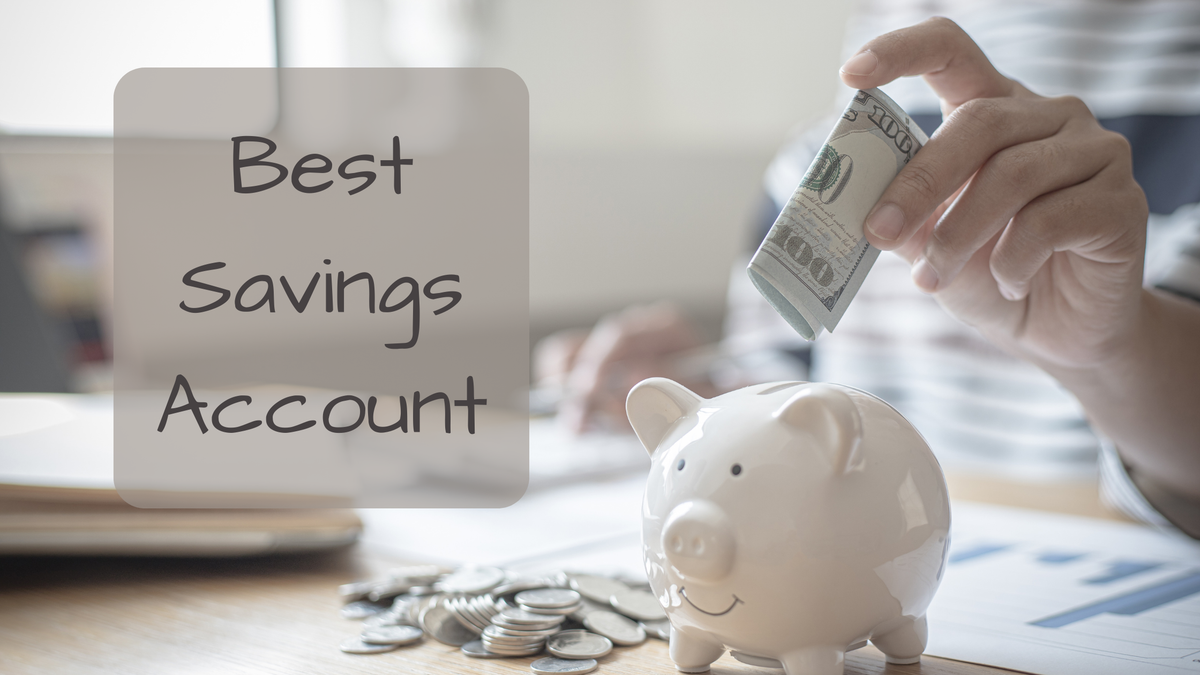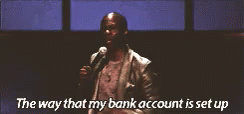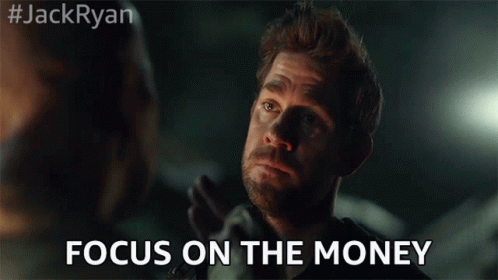Best Savings Account: How to Find the Right One for Your Money (and Your Sanity)
Tired of earning pennies on your savings? Learn how to find the best savings account for your goals—without hidden fees or confusing fine print. This blog breaks down what to look for, why it matters, and how to make your money finally work for you.

If you're like most people, the term “best savings account” might sound like a trap.
Because let’s be honest: we were never taught how to manage money, let alone how to pick the right kind of account for our goals.
And that’s the real problem, isn’t it?
We graduate knowing the Pythagorean theorem, but not how compound interest works. We’re handed student loans, credit cards, and life expenses—and expected to just figure it out.
So if you've been wondering where to actually put your money so it works for you—not just sits there earning pennies—this is the blog for you.
Let’s break down how to find the best savings account for your goals, what to avoid, and how this one small decision can shift your financial future.
First: What Is a Savings Account, Really?
Let’s clear something up: not all savings accounts are created equal.
At the most basic level, a savings account is a place to store money you don’t want to spend immediately. It should be safe, easy to access, and (hopefully) earning a little bit of interest while it sits there.
The problem? Most traditional bank savings accounts are doing the bare minimum.
We're talking:
- 0.01% to 0.05% APY (annual percentage yield)
- Monthly maintenance fees that eat your balance
- Minimum deposit requirements you may not meet
- Poor mobile apps and clunky websites
If your money is just sitting there doing nothing, you’re not saving—you’re stagnating.
So What Makes a Savings Account “The Best”?
Let’s get real about what matters.
The best savings account:
✅ Pays you compound interest (so your money earns on its own earnings)
✅ Has no monthly fees
✅ Doesn’t require a big opening balance
✅ Is FDIC-insured for your peace of mind
✅ Lets you easily transfer money in and out
✅ Has a clean, easy-to-use mobile interface
That’s why so many of today’s smart savers are turning to online savings accounts - especially high-yield savings accounts (HYSAs).

Compound Interest: Your Secret Weapon
Most traditional savings accounts give you simple interest - a flat return on your initial deposit.
But the best accounts give you compound interest - which means:
You earn interest on your balance + previous interest.
And it adds up faster than you think.
Here's what it looks like in real life:
Let’s say you deposit $1,000 into a high-yield savings account earning 4% APY, compounded monthly.
- After 1 year, you’ll have around $1,040.74
- After 5 years, it’ll grow to $1,220.20
And you didn’t have to do anything but let it sit.
That’s the beauty of compound interest—and why choosing the right account actually matters.
Top Options to Consider
There’s no one-size-fits-all “best” account, but here are a few consistently top-rated options as of 2025:
- Ally Bank – Great customer service + no fees
- Marcus by Goldman Sachs – High APY + easy automation
- SoFi – Solid all-around features + bonuses
- Capital One 360 – Reliable + sub-accounts for budgeting
- CIT Bank – Especially strong for savings growth
Just make sure the account you choose offers a competitive APY (3% or higher), no fees, and is FDIC-insured.
Use Your Savings Account to Build Buckets for Life
One of the best features many online accounts now offer? The ability to create goal-based savings buckets.
Instead of dumping all your money into one pot, you can divide it up like this:
- “Emergency Fund”
- “Summer Vacation”
- “Car Repairs”
- “Next Christmas”
This makes it easier to save intentionally—and avoid raiding your emergency fund for a concert ticket.
Want to Stay on Top of Your Money Goals?
Opening the right account is only step one. You still need to:
- Track how much you’re saving
- Set clear goals
- Monitor your bills and income
- Stay consistent over time
That’s where the FREE Financial Planner Bundle (a $47.00 value) comes in.
You get 7 printable tools to help you track your:
✔️ Savings
✔️ Budget
✔️ Bills
✔️ Income
✔️ Debt payoff
It’s simple, visual, and keeps everything in one place—especially if you’re not a spreadsheet kind of person.

But What If You Don’t Have Money to Save Right Now?
Let’s not pretend saving is always easy.
Sometimes the bills are too high and the income’s too low. That’s real.
If you’re in that spot, start with a low-effort side hustle that doesn’t burn you out.
My go-to? SendIt.
It’s a legally compliant way to earn money by mailing sweepstakes entries from home (yes, really).
📬 10 envelopes = $50
📬 100 envelopes = up to $500/month
No tech skills, no sales, and you can do it in your PJs.
The Real Reason This Matters: Financial Literacy
Most of us were never taught how to manage money.
We weren’t shown how savings accounts worked, how to grow wealth, or how to budget for the future. We were thrown into adulthood and told to “figure it out.”
That’s why I created the 7 Money Rules You Must Learn Before It’s Too Late—a free guide to help you break out of that cycle and finally feel confident with your finances.
And if you want support, you’re not alone.
👉 Book a free intro call with me and my gal, Joy—we’ll help you figure out where to start.
The Best Savings Account Is A Functional One
You don’t need the fanciest bank.
You don’t need an MBA.
You just need an account that helps your money grow safely.
The best savings account for you is the one that fits your life, supports your goals, and actually pays you to keep your money there.
So here’s what I’d say:
- Open a high-yield, fee-free, FDIC-insured savings account
- Start with whatever you can—even $5 matters
- Automate it weekly or monthly
- Track your progress and celebrate your wins
You’ve got this.
And if you want tools or support—I’m right here when you’re ready.
📌 Your Next Steps:
✔️ Download the 7 Money Rules Free Guide
✔️ Get my FREE Financial Planner Bundle
✔️ Book a Free Intro Strategy Call with Me + Joy
✔️ Check Out SendIt
Affiliate Disclaimer
This blog may contain affiliate links, which means I may earn a small commission if you click on a link and make a purchase—at no extra cost to you. As an affiliate, I only recommend products that I personally use, trust, and believe will add value to my readers. Your support helps keep this content free and allows me to continue sharing helpful tips and resources.
I am not a medical professional, and the information provided on this blog is for educational and informational purposes only. Always consult with a qualified healthcare provider before making any changes to your skincare or wellness routine.